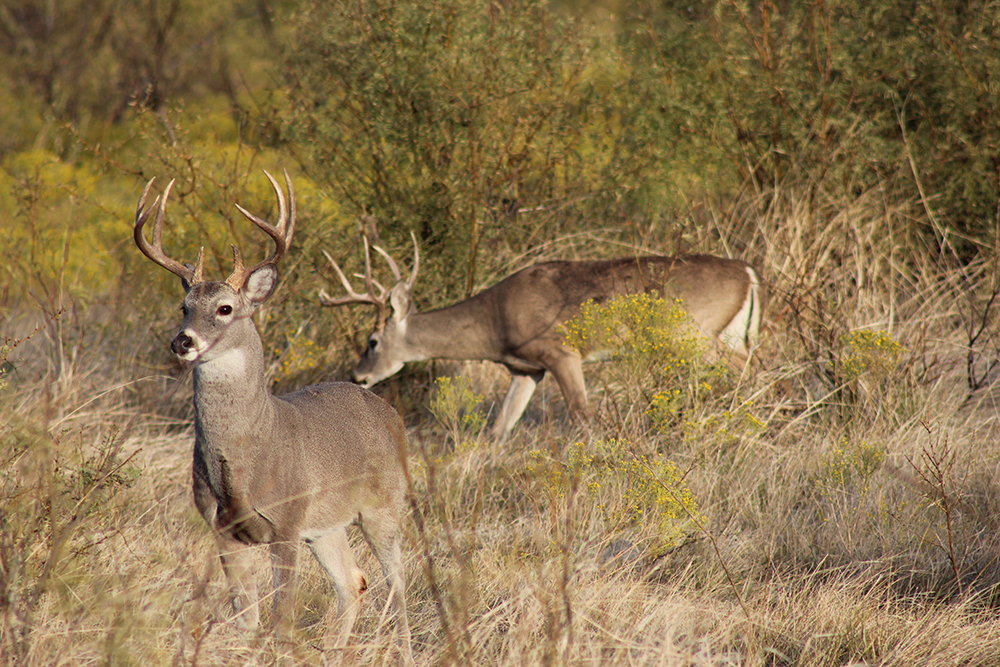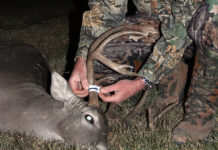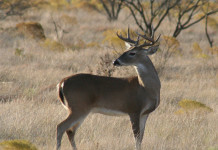The waiting game that was spring and summer is almost over for Texas deer hunters.
Beginning next month — specifically the first Saturday in October — those with archery equipment and crossbows will get first crack at another waiting game, the one filled with feverish expectation that a burly, mature buck will provide a close encounter of the broadhead kind.
Texas’ whitetail and mule deer archery seasons begin Oct. 2, 2021, and run through Nov. 5, providing more than an extra month of hunting before the general firearm season opens across the state the first weekend in November.
The state’s permit-only pronghorn antelope season also runs Oct. 2-17, 2021, to coincide with these archery deer frameworks across the Lone Star State.
While many hunters typically know how to score a white-tailed deer, a mule deer or a pronghorn, if you’ve never done it before the various measurements and tallies required to decipher just how big your trophy really is can throw you for a loop. However, once you get the hang of it, it’s a breeze to score any animal you harvest and this knowledge also can translate to the field when you’re sizing up that buck that just scampered out of the brush.
I remain in awe of veteran hunting guides who can take a quick glance at a buck and within a few seconds spit out that “he’s right about 155” or even the more descriptive “if his G-3s and G-4s weren’t about a half-inch off apiece he’s a 155-class buck.”
While most hunters sizing up a buck know instantly whether it’s a “shooter” or not, it is a good skill to know just how to go about quantifying the issue.
The scoring procedure recognized by the Boone & Crockett (firearm) and Pope & Young (archery) clubs for their record books involves a series of length and circumference measurements that can be done with a simple tape measure. To be scored by an official measurer recognized by either club, which is a prerequisite for entry into either set of record books if your trophy is large enough, a set of antlers or horns must have gone through a 60-day drying period. Any tallies done before that would be considered the “green” score and wouldn’t be admissible for the books.
The gross score for typical whitetails and muleys involves measuring the deer’s main beams, each tine length, four circumference tallies and the inside spread. The only difference on the circumference measurements is where they are taken since a muley’s horns branch. Add these figures up and you’ve got your gross. The next step is to take any deductions in symmetry, which are the differences between the measurements on each side. For example, if the buck had a 19-inch beam on one side and a 20-inch beam on the other, you’d mark down a 1-inch deduction and do the same for any other figures that don’t equally match.
Once you have your overall deduction figure, subtract that from the gross score. Next, measure any abnormal points and deduct that figure, too, which will give you a final net figure.
For non-typical whitetails and muleys, the scoring is the same, except instead of deducting abnormal point length, you add it to get the final net score.
For pronghorns, the scoring is somewhat similar. You tally up the length of each horn, take four circumference measurements on each side and tally the length of the prong on each horn. Any differences on the tallies are taken and then subtracted for the net score.
To qualify for the all-time B&C books, a typical whitetail must meet a minimum 170 net inches while a typical muley must be at least 190. An all-time record-book B&C non-typical whitetail must meet 195 while a non-typical muley must meet 230. For pronghorns, the minimum net is 82.
To make the P&Y record books, a typical whitetail must meet 125 net inches while a typical muley must hit a 145 minimum. A record P&Y non-typical whitetail must meet 155 and a non-typical muley must meet 170. For pronghorns, the minimum net is 67.
While animals bearing these measurements or larger normally are once-in-a-lifetime trophies for the average hunter, one state awards program offers a little more reasonable standards for inclusion. The Texas Big Game Awards, which is a partnership of state wildlife agencies and organizations, again has started its annual season and recognizes trophy animals taken across the state, while also focusing on the achievements of youth and first-time hunters. The program offers scholarship opportunities and there is a banquet for each of the eight Texas regions recognized that honor participants.
To make the TBGA, a typical whitetail in much of the state must meet a minimum of 130 inches while a non-typical buck must be 145 or better. For typical muleys, the minimum is 145 and the non-typical minimum is 160, while the pronghorn minimum is 70.
Hunting isn’t just about the numbers, and now that you may have gleaned some knowledge about sizing up an animal maybe you’ll pass on that next buck that pops out in hopes that a bigger one will come along. Either way, a strong case of buck fever is going to be felt by hundreds of thousands of Texas hunters in the coming weeks.
This fall should be about average when it comes to deer hunting projections from biologists, but in a state long known as the best in the country, that’s still a great thing.
For information about the Boone & Crockett and Pope & Young clubs, including scoring calculators, visit www.boone-crockett.org and www.pope-young.org. For information on the Texas Big Game Awards, visit www.texasbiggameawards.com.
Hunting Rio Grande Valley Wildlife Management Areas in Texas





















